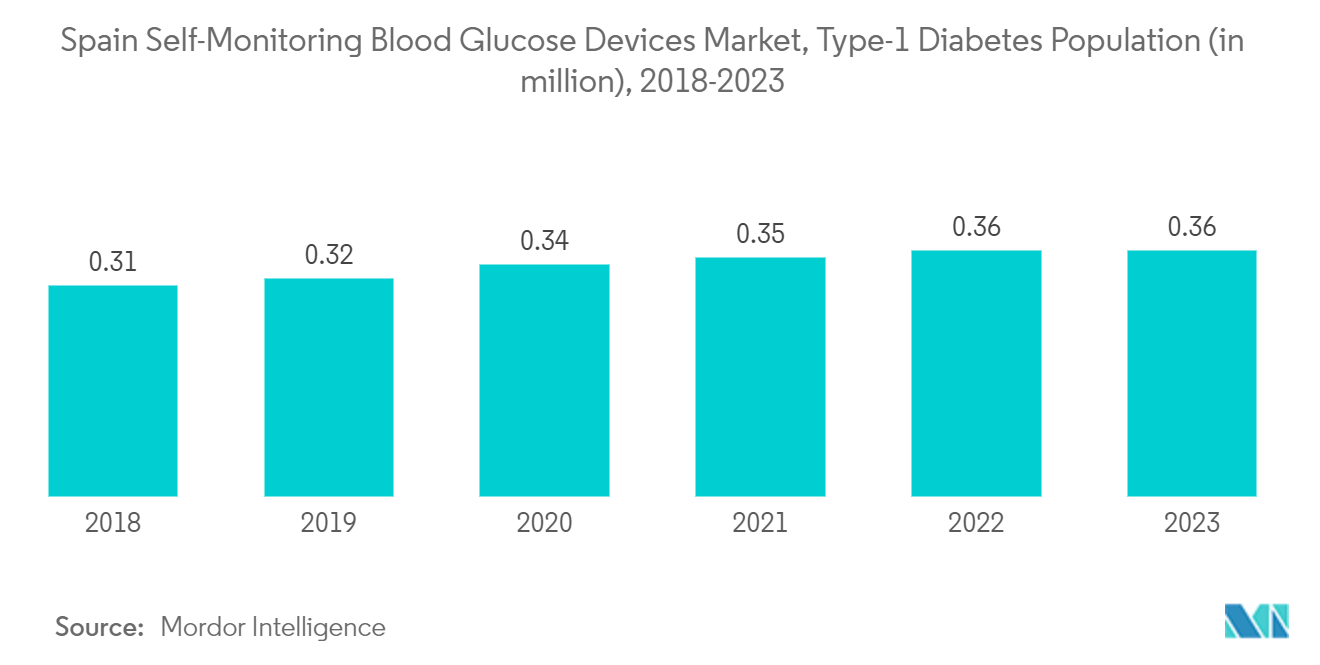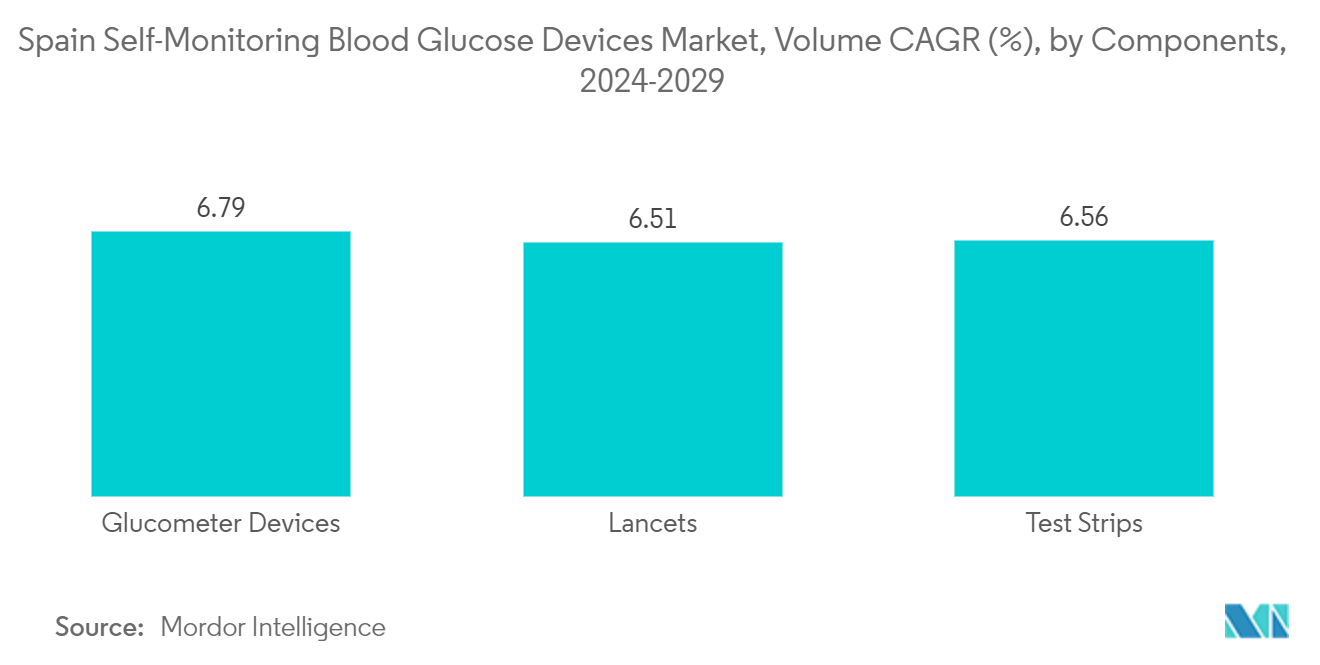Market Trends of Spain Self-Monitoring Blood Glucose Devices Industry
Rising Diabetes Prevalence in Spain
In Spain, the diabetes population is expected to increase by more than 2.5% over the forecast period.
According to the IDF report, diabetes prevalence in Spain reached 14.8%, or one in seven adults, the second highest rate in Europe. In addition, diabetes-related health expenditures in Spain reached 15.5 billion USD. Almost 30.3% of people living with diabetes in Spain were undiagnosed. When diabetes is undetected or inadequately treated, it can cause serious and life-threatening complications, such as heart attack, stroke, kidney failure, blindness, and lower-limb amputation. These result in reduced quality of life and higher healthcare costs.
According to the Sociedad Espanola de Diabetes (SED), therapeutic education in diabetes has gone from being a necessity to becoming a priority and an urgency. The unstoppable increase in cases and the appearance of important developments in the control and management of the disease require, more than ever, training efforts accompanied by indispensable equity measures to facilitate the access of all people with diabetes to these new resources. The SED also recognizes the important progress made in the approach to diabetes, especially with technological advances. For example, the financing of Flash systems for people with type-2 diabetes on treatment with a bolus-basal insulin regimen has been approved.
Self-monitoring is a commitment that many diabetic patients make to manage their condition. The blood glucose levels help the patients and doctors modify their diet, lifestyle, insulin therapy, and medications to help their blood sugar return to normal. With newer innovations in medical technology, glucometers these days have highly sensitive strips and sensors that can detect every component of blood accurately, close to lab results.
Therefore, the studied market is anticipated to witness growth over the analysis period due to rising prevalence and the aforementioned factors.

The Test Strips Segment holds the highest market share in the current year
The test strip segment recorded a market share of about 76.9% in the current year.
Blood glucose test strips are small, disposable strips and are a key component of blood glucose testing. When blood is placed on the test strip, it reacts with a chemical called glucose oxidase, producing gluconic acid from the glucose in the blood. At the other end of the test strip, the meter transfers a current to the strip. The test strip has electric terminals, which allow the meter to measure the current between the terminals. The current between the terminals changes depending on the level of gluconic acid that has been produced. The blood glucose meter then uses an algorithm to work out the blood glucose level based on the difference in current.
The growth in market share of test strips is expected to be higher than that of glucose meters because of the difference in use-case frequency. The glucometer is a one-time purchase; test strips, on the other hand, are a continuous investment as a test strip needs to be disposed of after one use, causing a recurrent cost impact. While an average glucose meter lasts anywhere between six months and three years, presenting a one-time cost during the same time frame,
Diabetes care requires the tracking and monitoring of many different test results and processes while simultaneously controlling risks to prevent complications. People with diabetes face complex medical regimens and often encounter numerous health professionals responsible for elements of the management of the disease and the prevention of its complications. Recent studies show that the implementation of electronic health records is not sufficient to improve the quality of diabetes care. The use of a diabetes registry for managing diabetes and preventing its complications by tracking clinical outcomes is widely recommended.
The aforementioned factors are expected to drive the market over the forecast period.

